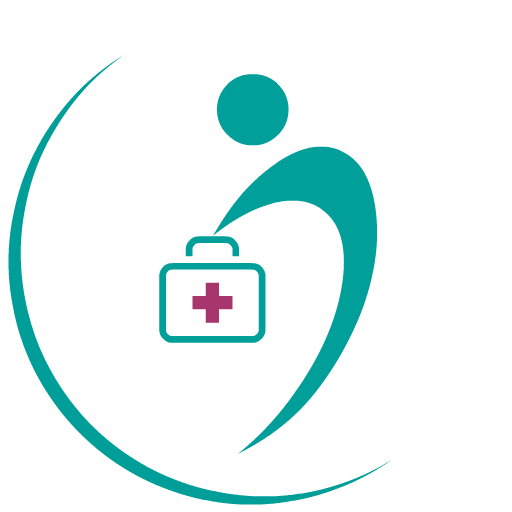The autoimmune condition known as celiac disease is brought on by eating gluten.
Nontropical sprue, celiac sprue, and gluten-sensitive enteropathy are all other names for it.
A protein found in wheat, barley, rye, and other grains is called gluten. It is what gives bread its chewy texture and makes dough elastic.
When someone with celiac disease consumes gluten, their body overreacts to the protein and damages their villi, which are projections the size of small fingers that run along the wall of their small intestine.
Your small intestine is unable to properly absorb nutrients from food when your villi are damaged. This can eventually result in malnourishment, bone loss, miscarriage, infertility, neurological diseases, and even certain cancers.
Refractory celiac disease, also known as nonresponsive celiac disease, occurs when celiac disease does not improve after avoiding gluten for at least a year.
The majority of celiac disease sufferers are unaware of their condition. It is believed by researchers that only 20% of people with the disease receive the appropriate diagnosis. It can take years to get a diagnosis because the damage to your intestine occurs very slowly and the symptoms are so diverse.
Gluten intolerance and sensitivity are distinct conditions that are distinct from celiac disease. Some of the same symptoms may occur in people with gluten intolerance, who may wish to avoid gluten. However, neither an immune response nor damage to the small intestine can be observed.
Celiac Disease Symptoms
Celiac disease and food allergies are distinct conditions, their symptoms differ.
If you are allergic to wheat but consume wheat-containing food, you may experience difficulty breathing or itchy, watery eyes.
Celiac disease symptoms in adults
If you have celiac disease and accidentally eat something with gluten in it, you may have symptoms including:
Abdominal pain
Anemia
Bloating or a feeling of fullness
Bone or joint pain
Constipation
Diarrhea
Gas
Heartburn
Itchy, blistery rash (doctors call this dermatitis herpetiformis)
Headaches or fatigue
Mouth ulcers
Nausea
Nervous system injury, including numb or tingling hands or feet, balance problems, or changes in awareness
Poop that’s pale, smells especially bad, or floats (steatorrhea)
Weight loss
Celiac disease can also cause a loss of bone density and reduced spleen function (hyposplenism).
Celiac disease symptoms in children
Children with celiac disease are more likely to have intestinal problems, including:
Bloating or belly swelling
Constipation
Diarrhea
Pale, foul-smelling poop
Upset stomach or vomiting
Weight loss
If celiac disease keeps a child’s body from absorbing the nutrients they need, they can have problems including:
Anemia
Damaged tooth enamel
Delayed puberty
Failure to thrive, in infants
Crankiness or mood changes
Neurological problems like learning disabilities and attention deficit hyperactivity disorder (ADHD)
Slow growth and short height
Celiac Disease Causes and Risk Factors
Celiac disease has no known cause, according to research. It may be linked to particular genes and tends to run in families.
It can be triggered by stressful medical events like surgery or a viral infection.
Emotional trauma and pregnancy can also occur.
You have a one in ten chance of developing celiac disease if one of your close relatives, such as a parent or sibling, has the condition.
The disease is most common among Caucasians and people who have other diseases, including:
Hashimoto’s thyroiditis
Type 1 diabetes
Addison’s disease
Down syndrome
Rheumatoid arthritis
Turner syndrome (a condition in which a female is missing an X chromosome)
Multiple sclerosis (MS)
Autoimmune hepatitis
Sjogren’s syndrome
Idiopathic dilated cardiomyopathy
IgA nephropathy
Lupus
Irritable bowel syndrome (IBS)
Chronic pancreatitis
Psoriasis
Scleroderma
Williams syndrome
Primary biliary cirrhosis
Lactose intolerance
Intestinal lymphoma
Intestinal cancer
Celiac Disease Complications
Celiac disease can be dangerous if you don’t get treatment. Complications may include:
Cancer, including intestinal lymphoma and small bowel cancer
Damaged tooth enamel
Infertility and miscarriage
Lactose intolerance
Malnutrition
Nervous system problems like seizures or pain and numbness in your hands and feet (peripheral neuropathy)
Pancreatic disease
Weak bones
Celiac Disease Tests and Diagnosis
Doctors use blood tests and other tests to help find out if you have celiac disease:
Serology tests look for certain antibodies.
Blood tests check other parts of your immune system.
Intestinal fatty acid binding protein tests show if there’s damage to the intestine.
A complete blood count looks for anemia (low red blood cells).
C-reactive protein tests show if there’s inflammation.
Metabolic panels test liver and kidney function.
Vitamin D, B12, and folate tests look for vitamin deficiencies.
Iron and ferritin tests look for iron deficiency.
Swallowing a small camera can show problems in your digestive tract.
Imaging tests show signs in the intestine, like wall thickening or changes to blood vessels.
Genetic testing looks for human leukocyte antigens to rule out celiac disease.
If you're on a gluten-free diet, you'll need to come off it before having the antibody test so the results will be correct.
If blood and other tests show that you might have celiac disease, you’ll probably need to have an endoscopy. This procedure lets your doctor look at your small intestine and take a bit of tissue to see whether it’s damaged.
If you have a rash, doctors will take a small sample of your skin to look for signs it’s caused by celiac disease. This rash is easy to confuse with other skin problems.
Celiac Disease Treatment and Diet
No drugs treat celiac disease. The best thing you can do is change your diet.
Unless they’re labeled as gluten-free, don’t eat foods that are typically made with grains, including:
Beer
Bread, cake, and other baked goods
Cereals
Pasta or noodles
Crackers
Breading
Pancakes
Sauces and gravies
These grains always have gluten:
Wheat
Wheat Berries
Durum
Semolina
Spelt
Farina
Farro
Graham
Einkorn wheat
Rye
Barley
Malt
Brewer’s yeast
Wheat starch
People with celiac disease need to check labels carefully.
Many processed foods sometimes have gluten:
Granola or energy bars
French fries
Potato chips
Lunch meats
Candy or candy bars
Soup
Salad dressings and marinades
Meat substitutes such as seitan or veggie burgers
Soy sauce
These foods are always gluten-free:
Fruits
Vegetables
Meat and poultry
Fish and other seafood
Dairy
Beans and nuts
Gluten-free starches and grains include:
Rice
Corn or maize
Soy
Potato
Tapioca
Beans
Sorghum
Quinoa
Millet
Amaranth
Flax
Chia
Nut flours
It's important to read the label of common products like toothpaste and medicines to make sure they don't contain gluten.
Your doctor may prescribe gluten-free vitamins and minerals to you and give you medication if you have a skin rash if you have a serious lack of nutrients.
Your small intestine should begin to heal after a few weeks on a gluten-free diet, and you should start to feel better.
Blogs
Stay connected to health experts and read what they have to say via DocSmart.
Please sign up to create your own blog





